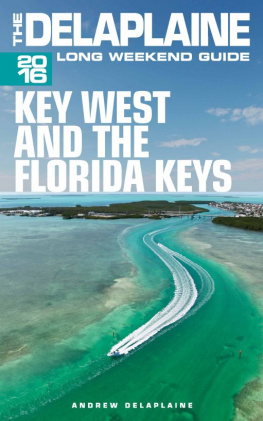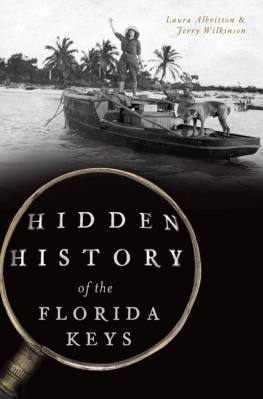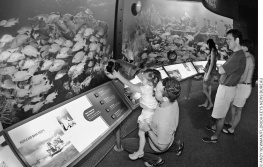A University of Wisconsin graduate, Victoria Shearer was a teacher briefly and then became an advertising account executive in Fairfield County, Connecticut, outside New York City. In the late 1980s, she was copy editor for COOKS magazine. In the early 1990s she lived in London, combining her passion for food with that of travel as she launched her on-going career as a freelance writer, producing feature articles for newspapers and magazines across the United States. Victoria is the author of twelve editions of the Insiders Guide to the Florida Keys and Key West and two editions of The Florida Keys CookbookRecipes and Foodways of Paradise. She also wrote Walking Places in New England, Quick, Cheap Comfort Food, Leftover Makeovers, Make Ahead Meals, Slow Cooker Classics from Around the World, and Florida Keys & Key West Chefs Table.
Fascinated by the diverse history of the Florida Keys, Victoria immersed herself in the archives of the Key Largo, Islamorada, Marathon, and Key West libraries for two years, writing It Happened in the Florida Keys. She discovered, hidden within the yellowed newspaper clippings, tales of triumph and tragedy, inspiration and indignation, courage and comedythreads of happenstance woven through the years into the unique fabric that makes up the Florida Keys.
Victoria and her husband, Bob, have enjoyed the beauty and bounty of the Keys for more than twenty-five years. They have two children and seven grandchildren.
The Beatles got it right when they crooned: I get by with a little help from my friends! At no time has this sentiment rung more true than for the two long years of research and writing for It Happened in the Florida Keys.
My sincere gratitude goes to Megan Hiller for suggesting that I delve into the diverse history of the Florida Keys and write the book. And thank you to the gang at Globe Pequot Press, who continue to enthusiastically support my endeavors.
Thank you to the helpful librarians in the Monroe County libraries at which I camped out for weeks on endKey Largo, Islamorada, Marathon, and Key West. The constant whine of my scanner could not have been easy to tolerate. A special thanks to Tom Hambright, historian in the Florida Room of Key West library, for his helpful insights. Thank you, as well, to Larry Kahn, former editor of the Florida Keys Keynoter, for opening up the papers archives for my exploration.
And finally, to my friends and familyyou know who you arethanks for the encouraging inquiries on my progress, believing my excuses when I said I was too busy to go for a walk or play tennis, and for those great pickup meals when I was down-under writing. You are my inspiration!
N ovember 19, 1822. Fresh breezes from the east and a two-knot current set strong to the southwest spirited the eighty-six-foot schooner through the murky haze of the starless night. Lieutenant John M. Dale took a sounding about 9:00 p.m., as the 175-ton vessel headed north-by-east in the Atlantic waters along the Florida Keys. Finding no bottom at forty-five fathoms, he adjusted course to north-by-west and reflected on the events that had catapulted him to the command of this ship, the USS Alligator, a mere ten days before.
In 1820, the US Navy had built a fleet of four twelve-gun schoonersDolphin, Shark, Alligator, and Porpoisedesigned to be small and fast enough to intercept the slavers and pirates that plagued African and West Indian waters. When the United States acquired Florida from Spain in 1821, the federal government resolved to use these schooners to patrol the waters off the US territorys southern coast as well, in an effort to rid the area of marauders who posed a near-constant threat to commercial American shipping.
The Alligator captured several slave ships off the west coast of Africa in her first two assignments, then sailed to the Caribbean to hunt for pirates early in 1822 under the command of William H. Allen. Lieutenant Dale was second in command. The Alligator captured her first target, the Cienega, off Nuevitas, Cuba, in April, but didnt encounter any more buccaneers for months.
On November 8, as the Alligator was putting down anchor in the Cuban port of Matanzas, two men requested permission to board the vessel and state their situation. Captain Mayo of the brigantine Iris and first mate Marsden of the schooner Mary & Eliza recounted to Captain Allen how pirates had captured their two ships four days before in the Bay of Lajuapo, about forty-five miles away. The marauders threatened to burn the two ships and murder all the crew unless Mayo and Marsden secured a $6,000 ransom in Matanzas.
Having had no luck raising the money, the two men became intent on mustering an expeditionary force to rout the pirates and regain control of their ships. They asked Allen for his help. Having experienced no action for more than six months, Captain Allen enthusiastically agreed to lead the counterattack immediately. The Alligator and her crew of fifty left posthaste.
Approaching the Bay of Lajuapo the morning of November 9, the Alligator sighted three captured vesselsthe ship William and Henry, the brig Sarah Morill, and the schooner Nancy and Maryall at anchor. Under the sweep of its oars, the eighty-ton pirate schooner Revenge guarded the bay. Small boats full of men ferried back and forth between the pirate craft and the commandeered ships.
The only living coral reef in the continental US runs from Fowey Rocks in Miami to the Dry Tortugas.
Captain Allen judged that the Alligator couldnt overtake the Revenge and ordered his boats hoisted outmanned and armed with muskets, swords, and pistols. The boats gave chase. The pirates fired a heavy round of grapeshot from their long twelve-pounders but caused no damage. Once in range, Allens men opened a barrage of musket fire. The pirates abandoned the Revenge, jumping overboard or into their boats and making for a sister ship that had just entered the bay.
Captain Allen directed a midshipman and four seamen to board the Revenge and claim the captured vessel as its prize. Allen himself led the charge to the second pirate schooner aboard the Alligators launch. Lieutenant Dale followed in the cutter. His crew of seamen, manning the oars of the flotilla, joined the attack. More than sixty pirates, reinforced with small arms, cutlasses, and boarding pikes, awaited them aboard the decks of the sister ship. Gunfire raged from all sides.
Suddenly a musket ball pierced Captain Allens skull, followed shortly by another shot that lodged between his left shoulder and breastbone. Mortally wounded, Allen shouted orders and encouragement to his men to his last breath. Under a continued barrage of musket fire, the pirates escaped out of the bay. Fourteen marauders were dead and a countless number injured or captured.
Lieutenant Dale and his men returned to the Alligator. They discovered the abandoned Iris and Mary & Eliza several miles away, adrift in the bay with their cables cut. Mayo and Marsden took control of their respective ships. Assigning his crew to the pirate ship Revenge and the other recovered vessels, Dale and his armada set sail for Matanzas. They buried Captain Allen at sea with full military honors.







